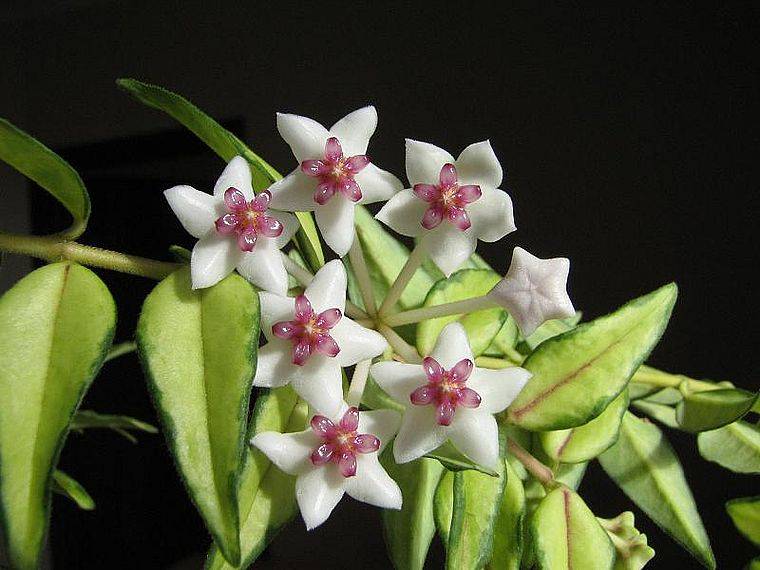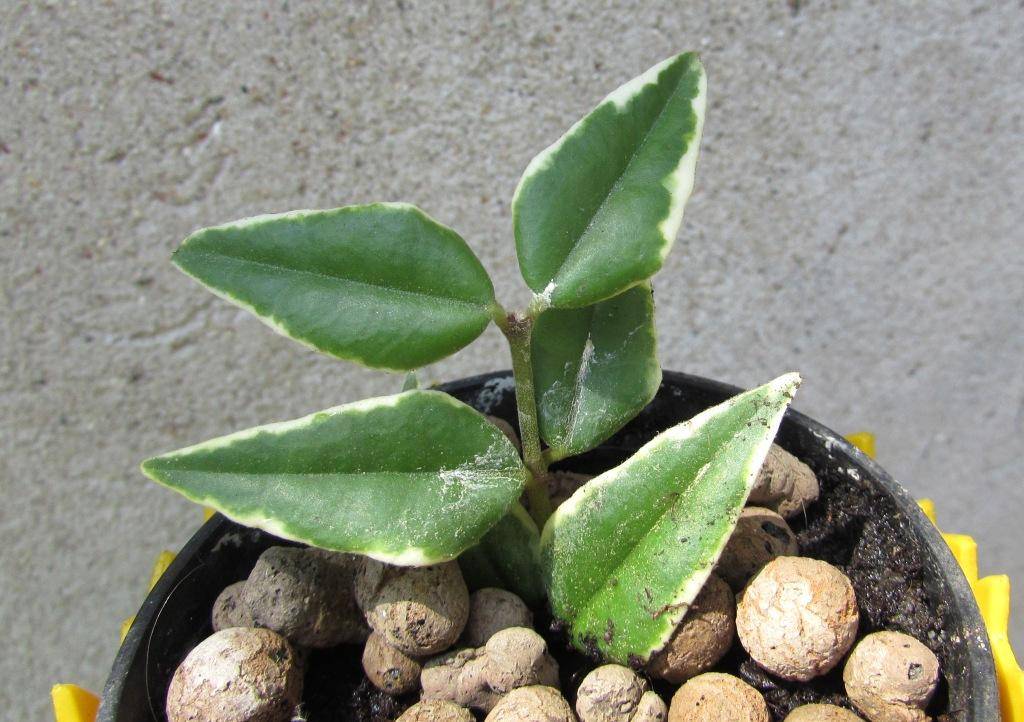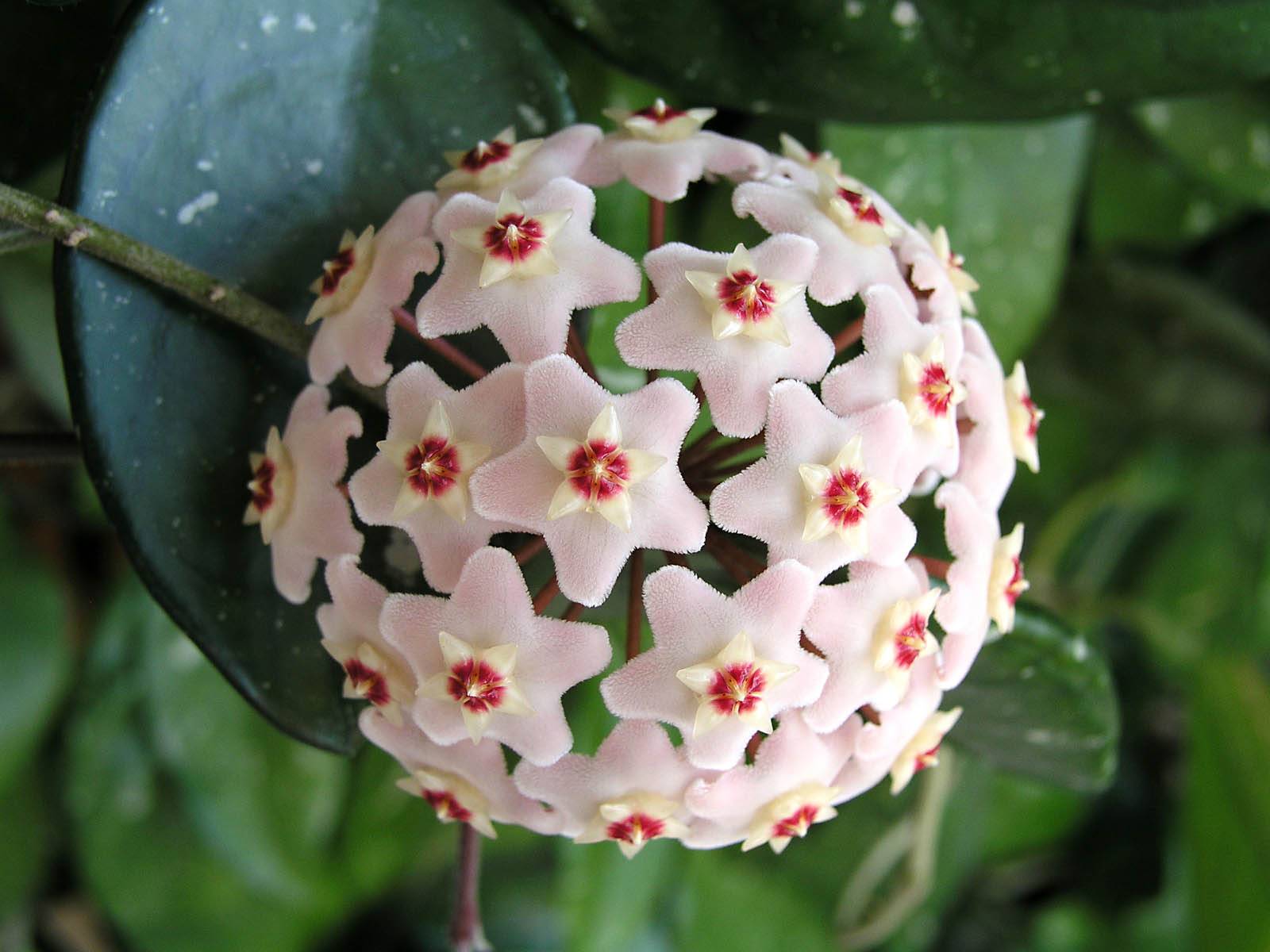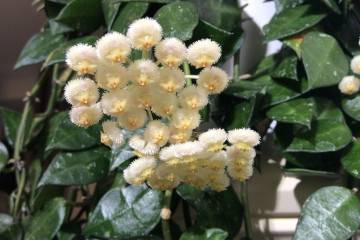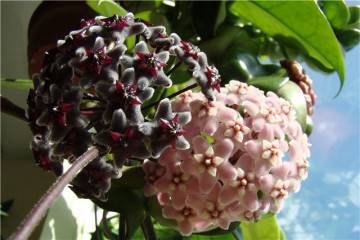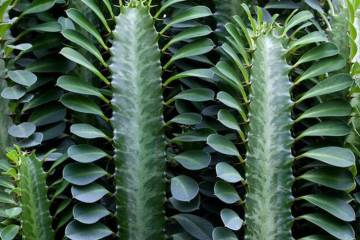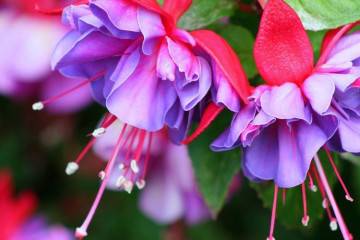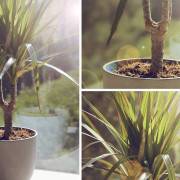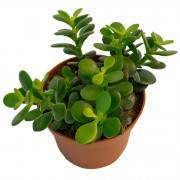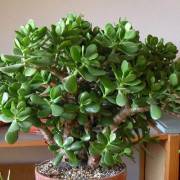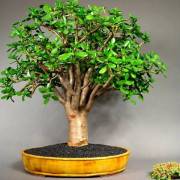Hoya Bella - home care
Content:
Hoya Bella is an inimitable beauty who found window sills and balconies in Russia from the tropical latitudes of South China, India, Indonesia and Australia. Delicate flowers, like the work of a jeweler, adorn each plant throughout the warm season. Hoya Bella, unpretentious and modest when leaving, will become a real queen in every home.
What does a flower look like
Hoya Bella (Hoya Bella, or Hoya Lanceolata Bella) belongs to the number of succulent plants. The flowers are small, have a regular five-pointed shape, formed by white pointed petals. The middle is a smaller pink-lilac flower. Hoya Bella leaves are smooth and shiny, covered with white hair, like all representatives of the succulent group. May have sharp or rounded edges, depending on the type. They are placed alternately on the stem.
Common varieties
The flower of Hoya Bella variegata, or variegated (Hoya Lanceolata ssp. Bella cv. Variegata) is so called due to the presence of a yellowish center on the leaves.
Hoya Lanceolata ssp. Bella cv. Albomarginata is famous for its leaves, which have light edges.
Hoya Luis Buis (H. Century Louis Buis) - the most popular variety. Vine leaves are small, and their central part is decorated with a golden spot and a red convex vein.
History of appearance
The plant owes its name to the gardener of the Duke of Northumberlain T. Hoy. The fact is that the duke traveled a lot to various countries of the world and from there brought varieties of unknown plants to England. Most of them did not have a name at that time (XVIII century) and were not classified, not to mention the fact that no one knew how to care for and grow them. One of the many plants that T. Hoyu managed to grow and propagate in the greenhouse, having adapted to the European climate conditions, was named "hoya" in honor of the famous gardener.
Features of home care
In growing this flower at home, you need to take into account some features.
Temperature
Hoya Bella is grown mainly indoors - at home or in the office. It is worth making sure that the air temperature in the room does not drop below 18 ° C, and that there are no drafts.
Lighting
The flower loves to grow on well-lit windowsills. But if there are many cloudy days in the year, or a pot with a plant is on the northern windowsill, where little sunlight gets in and at the same time the hoya feels good and blooms, then you should not worry too much.
Watering
Water the plant with water at room temperature. It is better to use rainwater or filtered water for this.
Spraying
Hoya does not require additional spraying. However, if the weather is particularly hot, you can sprinkle the greens lightly with water. Spraying in this case will only benefit the plant. When autumn comes, this procedure is not carried out.
Humidity
The flower tolerates humid air well. If it is too dry, you should take care of spraying the plant. Two to three times a year, it is recommended to bathe with full immersion of the entire plant in water at room temperature. Keep it under water for up to 40 minutes.
The soil
Succulent grows well and develops on light soil types. To grow hoya Bella, you can take ordinary soil and mix it with peat and sand to lighten its structure. Sphagnum moss has proven itself well in this regard.
Top dressing
For hoya Bella, as for all intensely flowering plants, regular feeding is necessary. This should be done from the beginning of spring to the end of summer, applying fertilizer to the soil once a week. For this, liquid fertilizers for indoor plants are suitable. Dilute them with water strictly in the proportions indicated on the package.
Bloom
Hoya Bella, with good care, will delight its owners with abundant flowering for a long time.
Flowers are collected in inflorescences of nine flowers. They are white or pink in color, star-shaped, with a bright corolla.
Flower shapes
Hoya Bella flowers have a five-pointed regular shape, the petals are white or pink with pointed edges. In the middle of the flower there is a lilac corolla. Flowers fill the air with a unique rich aroma.
Flowering period
The plant blooms from late May to early autumn. The flowering process is endless: to replace the old fallen buds, new ones appear, which immediately open.
Changes in care during flowering
During flowering, the plant behaves quite moody. Hoya cannot be rearranged to another place; it should be protected from temperature extremes and drafts. In a new place, the plant may stop blooming, and a change in the level of illumination will lead to wilting of the buds and falling of the flower petals.
Hoya Bella does not need additional trimming. Faded inflorescences do not need to be touched, as soon fruits will appear on them, and new buds will develop on old peduncles.
How does it multiply
Reproduction of this exotic flower takes place according to all the usual rules for indoor plants and in traditional ways - by germinating seeds and cuttings.
Germinating seeds
Growing hoya from seeds at home is not practiced. This is due to the fact that Bella hoya rarely gives pods when grown at home. If the seeds are still collected, then you can try to germinate them. To do this, they are well dried in the sun, sown in loosened, light soil. The plant should germinate three weeks after planting. After germination, the shoots should not be touched until a few true leaves appear. Only when the culture is well established can the sprouts be transplanted into separate containers.
Rooting cuttings
The plant is propagated mainly by cuttings. For this, the cut branches are dipped into water, where they take root very quickly. Sometimes, when rooting, cuttings are covered with film or glass, creating the effect of a greenhouse. With this method, they need to be ventilated frequently.
Sheet
Growing hoya from a leaf is an extremely ineffective way.It is very rarely possible to grow a new plant in this way. The fact is that a leaf cut and placed in water quickly gives rise to roots. However, when it is transplanted into the soil for further development, it seems to freeze in its development and does not release a shoot. This state of the existence of a plant can last for years.
For flower growers who still want to try a similar experiment in growing hoya, it is worth stocking up on a leaf of a plant that grew in natural conditions. After germination of the roots, plant the leaf in the soil, stimulate its further active growth and development with the help of hormonal preparations. Then there is a possibility that after a while the leaf will release a separate shoot.
Transfer
Do not transplant the flower too often. The plant does not like this procedure and spends a lot of energy getting used to new conditions. The best period for transplanting is early spring, when the hoya is preparing for the new growing season. The whole procedure should be carried out as carefully as possible so as not to damage the root system. During transplanting, you need to remove the plant from the previous pot, without shaking off the soil. It is worth replanting in a new pot, which is only a couple of centimeters larger than the previous one.
Possible growing problems
Quite often, hoya suffers from a spider mite. Then, on the back of the leaves of the plant, you can see red spots. Subsequently, the leaves are curled into a tube and dry. At the first signs of damage, the plant should be immediately treated with an insecticide.
Since hoya is a weakly poisonous plant, you should be especially careful in families where a small child is growing or there are pets. Hoya's bright flowers attract them and they can taste them.
Hoya Bella's aroma is quite pleasant, however, if the culture grows indoors or in a small space, then its intensity becomes simply unbearable for others. Therefore, you should be especially careful when growing hoya in rooms where children under 14 years old and people suffering from diseases of the lungs and respiratory system live. Plant pollen can cause allergies.
Flower types
At home, it is common to grow two types of plants - fleshy hoya (Hoya Carnosa) and beautiful hoya (Hoya Bella). The most common is the first type of plant, which reaches 6 m in length. The flower is densely covered with successive sharp fleshy leaves. The flowers are white in the form of stars, collected in inflorescences.
When compared with the fleshy hoya, the beautiful one has flowers of a more graceful shape, they resemble the delicate work of a jeweler who collected each flower separately. The flowers consist of 7-9 white flowers. In the middle of each of them there is a purple corolla. The flowers have a pleasant, delicate aroma.
Signs and superstitions
In recent years, the popularity of hoya Bella as a houseplant has declined slightly. It's all about the prejudices that are associated with plants. Some believe that liana-like plants, including hoya, are highly undesirable in living quarters. They draw energy from homeowners, provoke scandals and quarrels, and also cut off cash flows. Some people even complain of feeling unwell, loss of strength and performance, if they spend a long time in the same room with Hoya Bella.
The choice of the Hoya Bella variety depends on the decorative properties and the purpose of growing the flower. Florists prefer the fleshy hoya, since it easily reproduces in room conditions and is less demanding in care.If you want to keep a beautiful flower in the house that will replace the bouquet, then the beautiful hoya will serve as a good alternative for this purpose.


